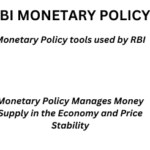Crop Diversification: Basics Explained


Cultivation of maize, mustard, and moong(3Ms) needs to be promoted in a big way across the country and this must be accompanied by the adoption of modern technology in the agriculture sector, said the Indian Council of Agricultural Research (ICAR) Deputy Director General A.K. Singh on 13/08/2022. The crop diversification must be promoted in a big way, instead of focusing on wheat and rice, cultivation Favouring of 3Ms should be promoted as it can help the country attain self-sufficiency and enhance the income of the farmers.
LEARNING FROM HOME/ WITHOUT CLASSES/ BASICS
Why there is a need for Crop Diversification
Farmers have been using the common government-promoted Green Revolution cropping pattern — rice-wheat-rice for a longer time to enhance productivity; has extracted the specific nutrients from the soil, resulting in soil deficiency in those nutrients along with a declined population of microfauna in the soil.
To meet the deficiency of soil nutrients, farmers apply fertilisers periodically, which further results in a change in the soil’s chemical and biological properties. Furthermore, mono-cropping patterns have more chances to be attacked by the same types of insects and pests, which in turn are controlled by pumping the insecticides and pesticides. This accumulates the residue of these chemicals in soil which pollutes the soil, crop and environment.
The problem got further aggravated due to depletion of the water table in the North-West plains zone comprising Punjab, Haryana and West Uttar Pradesh. The continuous cultivation of rice-wheat cropping system has witnessed the stagnancy in crop yield, infestation of weeds, contamination of groundwater, incidence of pests-diseases and deterioration of soil health
Moreover, Smallholder farmers globally are scrambling to adapt their farms as the effects of climate change mean rains become scarce and heat waves more intense.
Crop diversification is a strategy applied to grow more diverse crops from shrinking land resources with an increase in productivity in the same arable land. Crop Diversification refers to a shift from the regional dominance of one crop to regional production of a number of crops, to meet the ever-increasing demand for cereals, pulses, vegetables, fruits, oilseeds, fibres, fodder, grasses etc.
It aims to improve soil health and to maintain the dynamic equilibrium of the agro-ecosystem.
It can be supplemented by the integration of trees in the cropping system, also known as agroforestry, which plays a significant role in sustaining crop diversification. Agroforestry is a land-use system that includes trees, crops and/or livestock in a spatial and temporal manner, balancing both ecological and economic interactions of biotic and abiotic components. It harnesses the complementarity between trees and crops for the efficient utilisation of available resources.
Agroforestry can generate food, feed, fruits, fibre, fuel, fodder, fish, flavour, fragrance, floss, gum and resins as well as other non-wood products for food and nutritional security. It can also support livelihoods and promote productive, resilient agricultural environments in all ecologies.
Agroforestry enhances biodiversity due to the creation of diverse habitats for macro and micro-organisms and maintaining landforms for future generations. It provides opportunities to integrate traditionally grown crops, with other commercial crops such as cereals, oilseeds, pulses, vegetables, and fruits in agrihorticulture, hortisilviculture, silvolericulture, silvofloriculture, silvimedicinal, agrihortisilviculture, aquaforestry, silvipasture, hortipasture.
In the due course, The Government has adopted many useful strategies were proposed like Irrigation (‘Per Drop More Crop’); Quality seeds (Improving seed replacement rate); Soil-test based nutrient management (Distribution of soil-health cards); Post-harvest crop losses (Large investments in warehousing and cold chains); Value addition; Creation of a national agricultural market, removing distortions and e-platform etc.; New crop insurance scheme (Pradhan Mantri Fasal Bima Yojana)- Minimum Premium and Maximum Security; and Promotion of ancillary activities (poultry, sericulture, beekeeping and fisheries) etc.



0 Comments